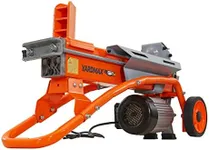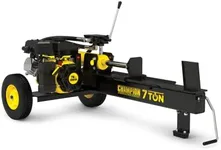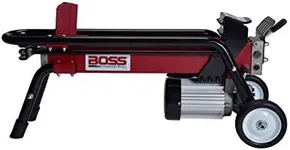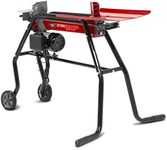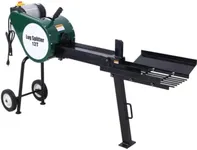Buying Guide for the Best Log Spliters
Choosing the right log splitter can make your wood splitting tasks much easier and more efficient. When selecting a log splitter, it's important to consider several key specifications to ensure you get a model that fits your needs. Understanding these specs will help you make an informed decision and find the best log splitter for your specific requirements.TonnageTonnage refers to the amount of force the log splitter can exert to split logs. This is a crucial spec because it determines the types and sizes of logs you can split. Log splitters typically range from 5 tons to over 30 tons. For smaller, softer logs, a lower tonnage (5-10 tons) may be sufficient. For larger, harder logs, you will need a higher tonnage (20-30+ tons). Consider the type of wood you will be splitting and choose a tonnage that matches your needs.
Power SourceLog splitters can be powered by electricity, gas, or manual effort. Electric log splitters are quieter and require less maintenance, making them ideal for residential use and smaller logs. Gas-powered splitters are more powerful and can handle larger logs, but they are noisier and require more maintenance. Manual log splitters are less expensive and good for occasional use with smaller logs. Choose a power source based on the frequency of use, the size of logs, and your preference for maintenance and noise levels.
Cycle TimeCycle time is the amount of time it takes for the log splitter to complete a full splitting cycle, including returning to its starting position. Faster cycle times mean you can split more logs in less time. Cycle times typically range from 10 to 20 seconds. If you have a large volume of logs to split, a faster cycle time will be more efficient. For occasional use, a slower cycle time may be acceptable.
Log CapacityLog capacity refers to the maximum length and diameter of logs that the splitter can handle. This is important because it determines the size of logs you can split. Log splitters usually specify the maximum log length (e.g., 20 inches) and diameter (e.g., 12 inches). Consider the size of the logs you will be working with and choose a log splitter that can accommodate them.
PortabilityPortability is the ease with which you can move the log splitter around. Some models come with wheels and handles, making them easier to transport. This is important if you need to move the splitter to different locations or store it when not in use. If you plan to use the splitter in one fixed location, portability may be less of a concern. Consider your need for mobility and choose a model that suits your requirements.
DurabilityDurability refers to the build quality and materials used in the log splitter. A durable log splitter will last longer and withstand heavy use. Look for models made from high-quality steel and with robust construction. If you plan to use the splitter frequently or for large, tough logs, durability is especially important. Choose a model that is built to last and can handle the demands of your wood splitting tasks.

